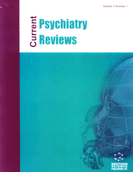Abstract
There has been renewed interest in the demarcation of pediatric catatonia from other pediatric conditions including autism. An update on symptoms, prevalence, evaluation, treatment, risk factors, and experimental models of pediatric catatonia is presented.
Recent prevalence rates of pediatric catatonia vary widely across studies, suggesting that catatonia may not be rare in younger patients. Symptoms and diagnostic criteria for pediatric catatonia are the same as in adults. Studies and clinical experience support benzodiazepines and electroconvulsive therapy, including maintenance electroconvulsive therapy, as treatment options. Sometimes catatonia develops after severe psychological trauma. Historical and contemporary clinical and experimental catatonia models are available for future research, focusing on motor circuitry dysfunction, abnormal neurotransmitters, epileptic discharges, genetics, neuroendocrine and immune abnormalities, fear reactions akin to the animal defense strategy of tonic immobility, and developmental risk factors.
There have been advances in demarcating pediatric catatonia in a wide variety of patients as a treatable condition that requires prompt identificiation. A model of developmental impairment complements clinical and experimental catatonia models.
Keywords: Adolescents, Benzodiazepines, Catatonia, Children, Treatment, Electroconvulsive therapy, Pediatric, Models.
 8
8



